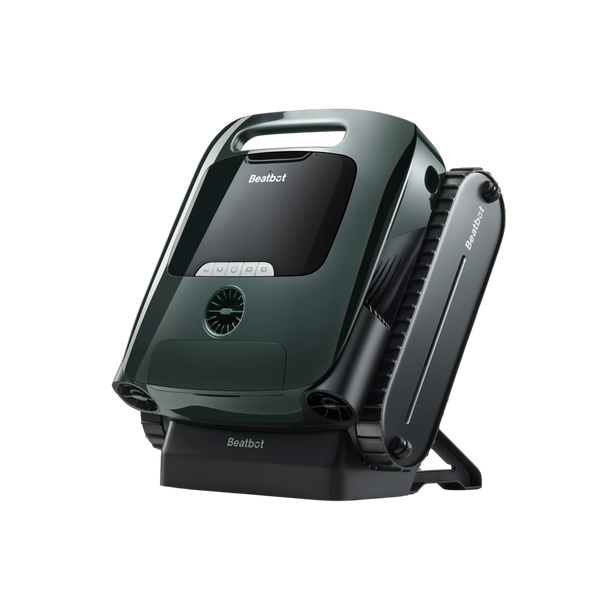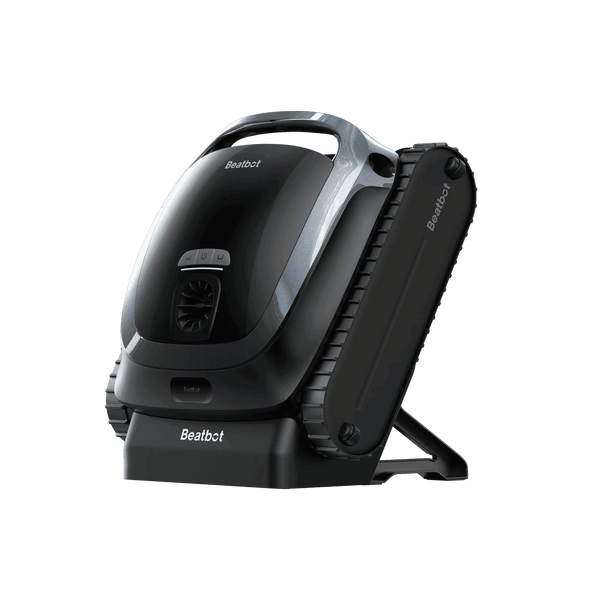Alkalinity Balancing Act: Techniques and Safety First
For most pool-owners, balancing alkalinity can never be a thrilling part among the pool maintaining procedures, but it's indeed a critical step that can't be ignored. Striking the right balance is key to not only keeping your pool in tip-top shape, but also ensuring a comfortable swim for everyone. Off-kilter alkalinity can wreak havoc on your pool's equipment, surfaces, and plumbing, and it can even lead to some less-than-pleasant skin and eye irritations when severe.
Table of contents
Alkalinity acts as a buffer, helping to keep your pool's pH levels steady. So, it’s of importance to manage it like a pro, and that’s what we’re going to talk about in this blog.
When you tweak your pool's alkalinity, understanding the consequences is key. Here's the lowdown:
Minimal Adjustments: Small changes in alkalinity usually have little effect on the pH levels. This means you have some room to make minor tweaks without worrying too much about immediate pH fluctuations.
Significant Changes: On the flip side, large shifts in alkalinity can lead to drastic pH changes. This is particularly true in the days following the adjustment, so keep an eye on those readings!
Lowering Alkalinity: If you're trying to lower alkalinity, be prepared for a bigger impact. The process often requires substantial amounts of acid, which can cause a significant drop in pH.
Stabilization Period: After making any major adjustments, it's wise to let the pool's pH stabilize over a couple of days before making further changes. This patience ensures you don't overcorrect and end up with a new set of issues.
By understanding these dynamics, you can maintain a balanced and healthy pool environment.
Understanding Alkalinity in a Swimming Pool
What is Alkalinity?
Alkalinity in a swimming pool refers to the water's ability to neutralize acids, stabilizing the pH levels. This is crucial because it prevents fluctuations in pH that can lead to water balance issues.
Why is it Important?
pH Stabilization : High alkalinity levels buffer the pH, keeping it within the optimal range. This helps prevent skin and eye irritation for swimmers and prolongs the life of pool equipment.
Protection of Pool Surfaces : Proper alkalinity protects pool surfaces from etching or scaling that might occur with pH level swings.
Enhanced Chlorine Effectiveness : Balanced alkalinity ensures chlorine functions effectively, maintaining water cleanliness and hygiene.
How to Maintain Alkalinity?
Testing : Use reliable test kits to measure alkalinity levels. Ideally, it should be between 80 and 120 parts per million (ppm).
Adjusting : If alkalinity is low, add sodium bicarbonate. If it's high, consider using a pool acid, carefully following the manufacturer's guidelines.
Regular Monitoring : Consistent monitoring helps you make timely adjustments and avoid potential pool issues.
Keeping the alkalinity properly balanced is a cornerstone of maintaining a healthy and enjoyable swimming environment. Regular testing and adjustments will ensure your pool remains a safe haven all swim season long.
The First Step: Gathering Your Essential Tools:
Before you roll up your sleeves, make sure you've got these essentials on hand:
- Testing Kit: Let's start with the basics! You'll need a dependable pool chemical testing kit to get an accurate read on your alkalinity levels.
- pH Adjusters: Soda ash to bump up the pH and muriatic acid or sodium bisulfate to rein it in.
- Alkalinity Calculator: This nifty tool helps you figure out just how much of a boost your pool needs.
- Bucket or Jug: For measuring out and adding those chemicals to your pool.
- Pool Brush: To give the pool walls and floor a good scrub, ensuring the chemicals spread evenly.
- Test Strips or Meter: For a quick and easy check of your water's balance.

The Easy Guide to Pool Alkalinity Balancing
Know Your Pool’s Numbers
You've got to know where you're at. Use that trusty test kit to check your pool's alkalinity level. The sweet spot is usually between 80-120 ppm. This gives you a starting point to work from.
How to Calculate Carbonate Alkalinity in Your Pool
Maintaining balanced water in your pool is crucial for both safety and enjoyment, and understanding carbonate alkalinity is a key part of this. Here's a simple formula to help you determine it.
Formula for Carbonate Alkalinity
Start with Total Alkalinity (TA). This is typically measured in parts per million (ppm). You can easily test this using a reliable pool water test kit.
Determine the Cyanuric Acid (CYA) level. Again, measure this in ppm, as it significantly impacts the calculation.
-
Use the Basic Formula:
Carbonate Alkalinity (ppm) = Total Alkalinity (ppm) - (Cyanuric Acid (ppm) / 3)This basic approach generally assumes that your pool's pH level remains within the ideal range of 7.2 to 7.8.
Adjusting for pH Levels
If your pool's pH is not within this range, you might need a slightly adjusted calculation:
-
Correction Factor Method:
Carbonate Alkalinity (ppm) = Total Alkalinity (ppm) - (Cyanuric Acid (ppm) x [pH Correction Factor])
The correction factor for pH compensates for variations beyond the standard range. Refer to specific pool chemistry resources for precise correction factors based on your pool's pH.
Why It's Important
Understanding and maintaining carbonate alkalinity in the right range prevents corrosion, scaling, and cloudiness. It ensures your pool water remains inviting and extends the life of your pool equipment.
By regularly testing and adjusting these chemical levels, you can ensure a safe and enjoyable swimming environment. With the right tools and a little know-how, managing pool chemistry becomes a straightforward part of pool ownership.
Reining in High Alkalinity
If your alkalinity is on the high side, it's time to get it under control. With a bit of effort and the right chemicals, you can bring it down. Sodium bisulfate or muriatic acid can help, but always follow the manufacturer's instructions. Apply the treatment gradually and keep a close eye on the water with regular testing.
Boosting Low Alkalinity
If your alkalinity is lagging, it's time for a boost. Sodium bicarbonate baking soda can be your go-to. It's a safe and straightforward way to increase alkalinity. As a rule of thumb, add about 1.5 pounds of baking soda per 10,000 gallons to give your alkalinity a lift. Keep testing the water to make sure you're on track.
Striking the Balance
After you've made your adjustments, give your pool's pump some time to do its thing and circulate the water evenly. It's a good idea to wait at least 24 hours before testing the water again to get a true reading. This gives the water chemistry time to settle down.
Safety First: Precautions for Balancing Alkalinity
- Personal Protective Equipment (PPE): Always suit up with rubber gloves, goggles, and long sleeves to shield your skin and eyes from any chemical exposure.
- Ventilation: When mixing and adding chemicals, do it in a well-ventilated area to avoid breathing in those fumes.
- Supervision: Keep kids and pets away from the pool area when you're handling chemicals or while the pool is being treated, that could be rather dangerous for them!
- Read The Labels: Carefully follow the instructions on chemical labels to make sure you're using the right amounts.
- No Mixing: Never mix different chemicals together; it can lead to some pretty dangerous reactions.
- Storage: Keep pool chemicals stored in a secure, dry place, out of reach of sunlight and heat.
- Emergency Measures: Have a spill kit and eyewash station on hand in case of accidental contact with chemicals.
- pH Adjustments: Be cautious when adjusting pH levels; drastic changes can affect how well your sanitizers work and how comfortable swimmers are.

FAQs
How often should I test and adjust my pool's alkalinity?
Aim to test your pool's alkalinity at least once a week, especially after heavy use or after dosing chemicals. Adjusting alkalinity should be a gradual process, and it's always good to retest the water 24 hours after making adjustments to see if the changes have leveled out.
Can weather changes affect pool alkalinity?
Absolutely! Weather can sway pool alkalinity. For example, rainwater, being naturally acidic, can lower alkalinity levels. High evaporation rates, common in hot, dry climates, can send alkalinity higher. Keep an eye on these weather shifts and adjust alkalinity levels accordingly to keep your pool water in balance.
Relative Blogs
About the author



















